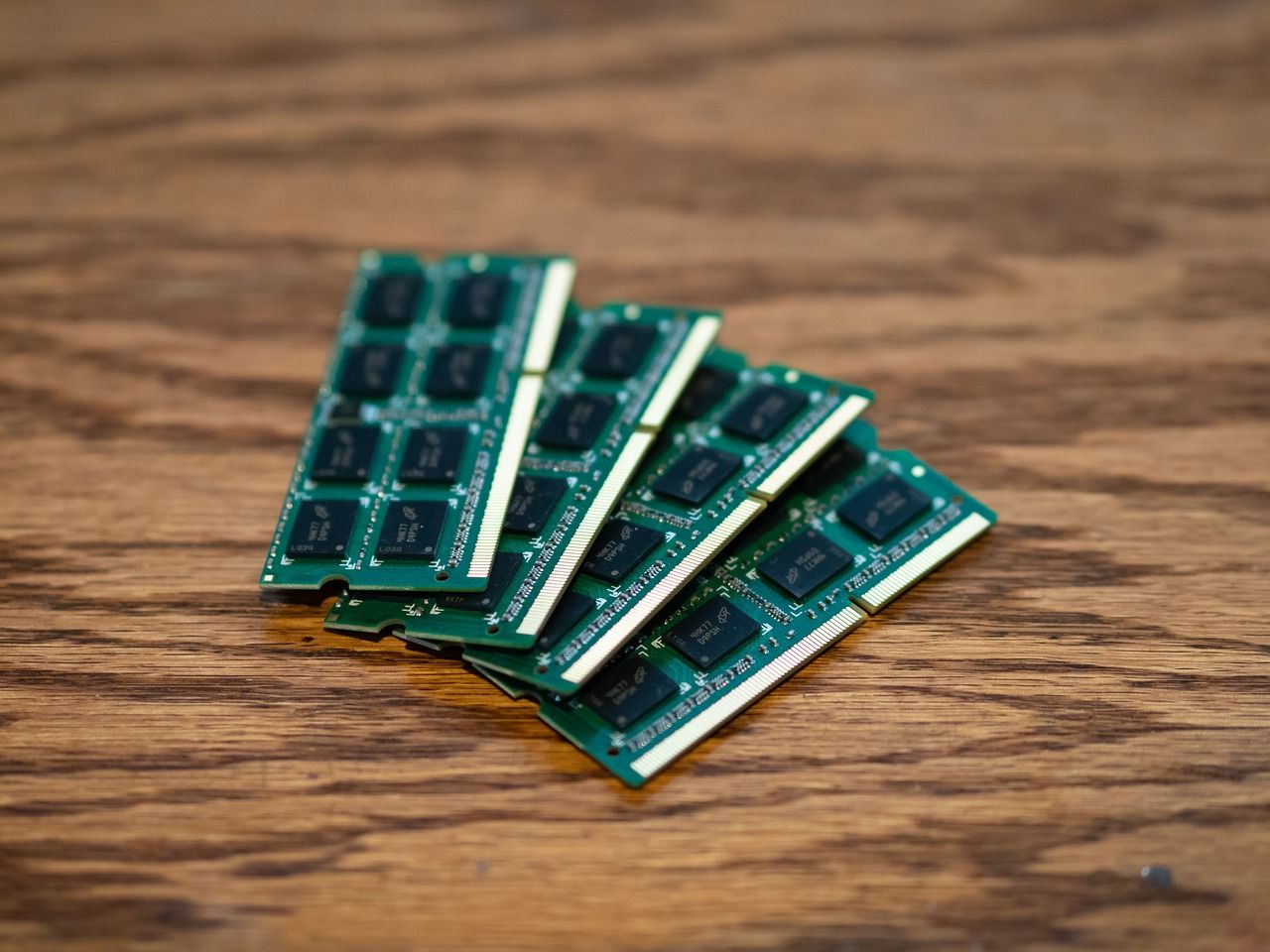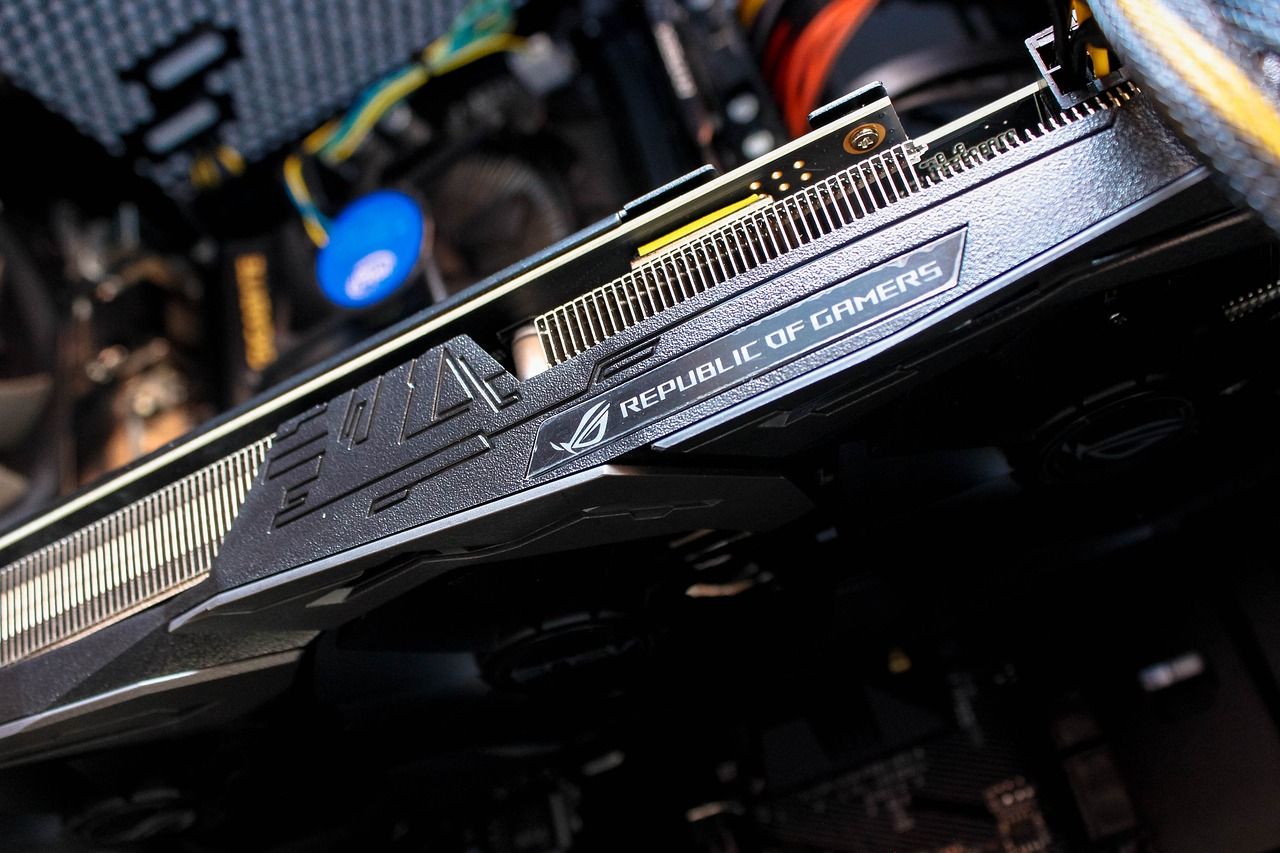If you're building a gaming computer, you've likely come across two similar-sounding terms: RAM and VRAM. However, what do these terms mean, how do they differ, and why do you need them for the best gaming experience?
Let's break down the differences and see how each one matters to your gaming PC.
What Is Random Access Memory (RAM)?

RAM acts as the "workbench" on which the computer puts all the active processes and software. Every time you load up a new program, it gets bundled onto the RAM for the computer to use.
As such, video games require your PC to have a minimum amount of RAM for it to run. This allows your computer to load the game onto the RAM so you can play it.
Related: What Does RAM Do for Gaming and How Much RAM Do I Need?
If you're buying a pre-built PC, you can see how much RAM it has under its "memory". It'll usually be somewhere around 2GB to 16GB, although you can get PCs with a lot more.
When You Should Get More RAM
Because RAM acts as the computer's workbench, having too little of it can have adverse effects on your PC's performance. Your computer is trying to fit everything you're running onto the RAM, but there's not enough room to do so.
When this happens, your PC begins tapping into what's known as virtual memory. This isn't the same as RAM; in fact, all it is is a dedicated part of your disk drive which the PC can offload things into when you exceed your RAM usage.
Related: Is Your Virtual Memory Too Low? Here's How You Can Fix It!
When this happens, you'll notice that open programs you haven't looked at for a while will slow to a crawl when you swap back to them. This is because the program has been shunted onto the virtual memory due to lack of use, then has to get dragged back onto your RAM when you swap back to it.
However, adding more RAM to a system is not a magical silver bullet that will solve all of its problems. For instance, if your computer's processor is slow, adding more RAM won't help it work faster.
What Is Video Random Access Memory (VRAM)?

In the same vein, VRAM acts in the same way as RAM, but for your graphic, video, and display needs.
You'll usually find VRAM in whatever piece of hardware displays content on your screen. If you have a graphics card, that card will have VRAM inside of it to handle all the display data. If you don't have a graphics card, your processor will have integrated graphics on it which will use some of the system's RAM for itself.
When you're shopping for a new graphics card, you can tell how much VRAM a card has by looking at its specifications. It'll usually be listed in gigabytes and printed on the box; a 4GB graphics card will have 4GB of VRAM.
When You Should Get More VRAM
Just as much as regular RAM helps boost your PC's ability to process calculations, VRAM helps it process display-related tasks. As such, if you're having issues with your display, getting more VRAM can help.
Related: Signs It's Time to Upgrade Your Graphics Card
For instance, if video games chug at higher settings and smooth out when you drop the quality, more VRAM may help. VRAM is also a crucial part of rendering games at certain resolutions; for instance, you need around 2-6GB of VRAM for a 1080p gaming experience.
However, much like RAM, a graphics card's VRAM isn't the be-all and end-all for performance. Graphics processing units (GPUs) have processors that run at certain clock speeds, and some will be better at cooling themselves than others. It's worth taking both into consideration when comparing GPUs.
What's the Difference Between RAM and VRAM?
In essence, the main difference between RAM and VRAM is what each is used for. When your computer has a hard time keeping processes in its memory, that's a RAM problem; when your computer doesn't have the space to handle intense display settings, that's a VRAM problem.
Of course, RAM and VRAM are just a few components that come together to make a PC. Sometimes a problem is due to your processor's speed, your GPU's processor, or something else.
As such, you can't expect to throw RAM or VRAM at a problem and hope that it fixes itself. However, if you have noticed your PC can't handle what you throw at it, more RAM or VRAM can help.
Can You Replace RAM With VRAM, or Vice Versa?
Unfortunately, it's not a good idea to solve a VRAM problem by purchasing more RAM, and vice versa. That's because they both have their individual jobs in the computer's ecosystem, and making one pick up the slack for another bogs things down.
For example, if you get a beefy 8GB graphics card, it's a bad idea to use it as a replacement for your system's RAM. There are examples of systems out there that use VRAM as regular RAM, such as the PlayStation 4; however, without special hardware or software, you'll likely come across errors when booting up a PC with a GPU and no RAM.
Similarly, you can't grab 32GB of RAM and get 4K gaming without a GPU. All that RAM will be fantastic for multitasking and loading software, but it's no good for rendering graphics.
But wait a minute. Earlier, we said that integrated graphics processors use a portion of system RAM to work. So, why can't you buy a lot of RAM, assign 8GB of RAM as VRAM, and get the same effect as an 8GB graphics card?
The problem here is that system RAM isn't so hot at handling display data as VRAM. A graphics card's VRAM is in close proximity to its processor, so it's quick and easy to move data from one to another. System RAM takes a bit longer for visual data to reach, so games using RAM as VRAM will be choppy and unpleasant to play.
A Tale of Two RAMS
If you're making a PC that can handle 3D graphics, you'll want one that has a decent amount of RAM and VRAM. Both of them have their individual jobs for 3D rendering, and it's up to you to ensure your PC give them enough space to do what they need to do.
Unfortunately, a gaming PC is a lot more than just its RAM and VRAM. There are plenty more specifications to consider, such as the processor, power supply, motherboard, and fan placement. Fortunately, there are plenty of tips and tricks you can use while building your PC to ensure a great end result.
Image Credit: FeelGoodLuck/Shutterstock.com
